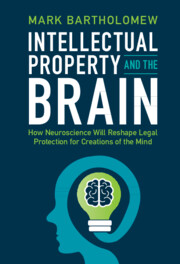 Intellectual Property and the Brain
Intellectual Property and the Brain Book contents
- Intellectual Property and the Brain
- Intellectual Property and the Brain
- Copyright page
- Contents
- List of Figures
- Acknowledgments
- Introduction
- Part I The Law and Neuroscience of Creative Activity
- Part II Understanding Audiences for Art and Advertising
- Part III Using Neuroscience to Improve Intellectual Property Law
- 6 How to Take Creativity Seriously
- 7 Know Your Audience
- 8 Advertising, Fast and Slow
- Conclusion
- Index
7 - Know Your Audience
from Part III - Using Neuroscience to Improve Intellectual Property Law
Published online by Cambridge University Press: 14 July 2022
- Intellectual Property and the Brain
- Intellectual Property and the Brain
- Copyright page
- Contents
- List of Figures
- Acknowledgments
- Introduction
- Part I The Law and Neuroscience of Creative Activity
- Part II Understanding Audiences for Art and Advertising
- Part III Using Neuroscience to Improve Intellectual Property Law
- 6 How to Take Creativity Seriously
- 7 Know Your Audience
- 8 Advertising, Fast and Slow
- Conclusion
- Index
Summary
Copyright’s test for infringement takes a uniform approach to aesthetics by treating all audiences and modalities of creative expression the same. We now know that this is not how aesthetic judgment works. The chapter describes how the law can be reformed to take differences in audiences and artistic media into account. The chapter also responds to potential objections to the use of neuroaesthetics in this legal context. A better understanding of how audiences perceive art, if implemented in the right manner, can help protect both economic and non-economic values embedded in copyright law in a more transparent way.
- Type
- Chapter
- Information
- Intellectual Property and the BrainHow Neuroscience Will Reshape Legal Protection for Creations of the Mind, pp. 153 - 167Publisher: Cambridge University PressPrint publication year: 2022
